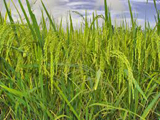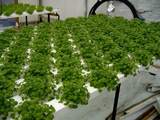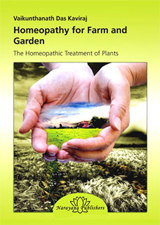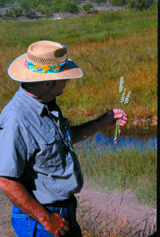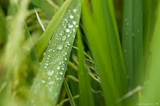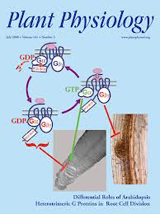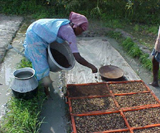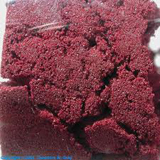Farming and health
Photobionics – an innovative application of the law of similars
Abstract
Photobionics is a science which explores practical implications of the spiritual truth that all creation is the condensation of cosmic light which operates through nature in various rhythms. The possibility of extending the knowledge of kuṇḍalinī and cakras to all living and non-living things, therefore, also becomes its field of exploration.
When seen in this perspective, micro-dilutions of certain chemicals when sprayed upon plants are found to enhance plant growth and resistant capacity. The use of artificial fertilisers and pesticides can thus be completely avoided. The ultimate aim is to achieve the yield of nature‘s optimum without artificial fertilisers, thereby obtaining the innate balance of various carbohydrates, proteins, terpenoids and flavanoids in the farm produce.
The theory behind this science is thoroughly discussed and the list of experiments done on paddy plants is given in the article below. The necessity to evaluate the quality of such farm produce in terms of their biochemical content is also briefly hinted.
The scenario
Villages are mines of nature‘s prosperity. The peace that reigns in the village atmosphere is the result of nature‘s pristine purity of cosmic energy shared by its creatures all alike — plants, animals and humans. The intelligence of the villager works more according to laws of intuition and other subtler ranges of mind in contrast to the educated people of towns and cities who rely more on ordinary mind in their day-to-day life. The systems and beliefs of village culture reflect this archetypal and aboriginal trait.
Agriculture, a chief enterprise based in villages, is a subject of apathy of our modern times. A field of life where Goddess Maheśvarī has taken the manifest form of Annapūrnā is a subject of gross negligence, woe to necessity-driven man and short-sightedness of the mind. This affliction has rotted down further into the fabric of village life, plundered its natural riches, unleashed instinctual behaviour among its people, making the village atmosphere unhealthy and unsafe to live in. A migration of all cultured people to towns and cities was a result of this and the village today is afflicted with incurable maladies of several kinds — social and physical. This malady has its reflections on the life of towns and cities also and the time is ripe now for mass chaos if no corrective measures are taken up soon.
One way to bring a correction to this state is to take up agriculture and reform it.
Introduction
Science documents the fact that plants receive the maximum amount of raw material for the synthesis of its food and growth from the air and environment and only a minimum from the earth (1). Also for photosynthesis, the amount of electricity used by the green plants all over the earth is six times the electricity consumed by humans for various purposes (2). Keeping these two facts in mind, one can easily recognise that plant life thrives on a constant communion with the electrical activity that is taking place between the earth crust and the planets and stars around. If the plants depend upon soil for the supply of micro-nutrients, the ability to attract these micro-nutrients and metabolise them comes from the cosmic rays that influence plant growth. It has been proved that plants may grow independent of soil when some of the essential micro-nutrients are supplied in micro-quantities by the science of Hydroponics (3).
The science of Photobionics is based upon a still higher understanding that every element that is available on earth is the result of a condensation of cosmic rays and these rays can enter into the life-system of plants or humans once a contact of the similar nature, however minute (even in the form of a subtle energy current characteristic to it), is achieved. The biological process that uses these chemicals or their subtle states as its input gets ignited and proceeds further in course of time with the favourability of other factors like the altitude, time, temperature, environment and the innate nature. The presence or necessity of these chemicals can be studied either intuitively by the colours of the aura of the plants or rationally by noticing various signs and symptoms which the plants or nature reflect in the ecosystem.
As I was pondering the possibilities of imitating the action of chemical fertilisers by natural methods, especially through homoeopathic medicines, I came to the conclusion that the ‘Law of Similars’ can be applied to plants and thus a result as good as that of chemical fertilisers can be achieved by natural means. Dr.Hahnemann claims that the Law of Similars is the sole law behind all cures though they are achieved by various means (4). Even allopathic medicines have to find for themselves a place (simulation) in a biochemical reaction that is a part of the body`s defence mechanism and only then does the body accept those medicines into their place in the biochemical hierarchy. But as their sphere of action is more on undoing the gross changes of pathology, they have to be used in large doses in order to counteract the pathological reaction. Whereas homoeopathic medicines are the subtilised form of simple salts or complex molecules which the body utilises in building its neuro-immunological responses, so they work even in ultra-minute form and are readily taken up by the larger currents of the body`s immune mechanism.
I started studying the physiology of plants and came to certain conclusions that fit this method of thinking and thus I had to name it Photobionics as many of the salient features that this science incorporates are not brought together in a single form so far, though all of them are being used and accepted under various names in various sciences.
Allthough I was using the potentisation process as advocated by Dr Hahnemann, I did not follow the theory of miasms and other such methods of homoeopathy as I worked on plants. Instead, I had to infer the action of various ions and molecules on various parts of the plant (and also on the human body) by studying their aura and other coincidental conditions.
How I got connected to this work
Since I attended the SAIIIHR seminar on Integral Health in 1999, I had started to comprehend the principles behind each system of medicine and analyse the causes of cure from a spiritual angle. I made every attempt to extend my field of sādhanā into my clinical practice and thus discovered some clues as to how to develop an interdisciplinary approach between various systems of medicine. In course of my spiritual sādhanā, I experienced some visions and had some dreams which I could not relate to my physical life and so did not pay attention to. As time passed, even my physical life came to a point where I had to infer and follow my own path based on these higher experiences and that is how I developed an interest in agriculture. This is how I started trying homoeopathic potencies on plants.
The idea of organic farming through homoeopathy is not new to the world. There have been many efforts in this direction but one can say that the implementation of this idea is not yet on a large scale owing to the lack of a universal formula. In course of my experiments, I stumbled upon one such formula which can be applied on a large scale and all chemical fertilisers and pesticides could be done away with. This appeared to me like a miracle at that time when I first thought this and my plan was to jump into action in a vital rush and do all necessary things by myself. Once I started working upon it, things became clear to me that the knowledge which is operating through me is of a cosmic nature and it will flow towards consummation as the Divine Mother guides.
The thought and its development
It was my grandfather who first intended to experiment with homoeopathy on plants around 1960. He could not conclude his work in his lifetime. My father worked upon it further but could not achieve any major breakthrough and so left it. My case proved to be different as I started studying homoeopathy in the light of Sri Aurobindo and the Mother.
Sri Aurobindo explains that the Super-conscient involves itself into this creation and works itself out in various phases of evolution as the subconscient and conscient. The journey of evolution culminates in the Gnosis of the Divine, existing everywhere and in everything. Thus inanimate matter, micro-organisms, vegetal life and animal life form a succession of stages through which man has evolved. To say the same thing in another way, matter, life and mind form successive stages of evolution and the present urge of Nature is towards the manifestation of Supermind, a principle hitherto not manifest as a quality of earth nature.
Science proclaims in its own language that Ontogeny repeats phylogeny, i.e., an embryo has to pass through all the phases of invertebrate, vertebrate and mammalian succession in order to take a human form. Spirituality also has something very similar but more profound than this to say — the order of rebirths. This signature of old forms upon a freshly evolving form does not cease with embryonic growth. In fact, it takes place on all the three planes, body, vital and the mind and these cycles of formation and dissolution of old forms take place in the consciousness of the fresh form till it discovers and manifests its inmost urge to exist in a new and fresh form. This discovery of its inmost urge is called the finding of the soul in spiritual parlance.
The process of finding the soul as it is explained in Tantra, a spiritual science, ranges across different energy-zones called cakras. Each cakra represents a specific concentration of energy of specific hue which condenses itself into a biological organisation of functions and they in turn create organs in order to come into touch with the Nature. This order of cakras, the kuṇḍaliī as it is called, is differently explained in various schools of yoga.
It is from this background that my spiritual experiences become significant. My experience is that this kuṇḍaliī model can be applied to plants also. These truths were occurring to me without any personal effort, while contemplating homoeopathic medicines to be prescribed to my patients. Most homoeopathic medicines, which were prescribed by me according to my intuition at that time, were various mineral salts and so I started plotting them along the kuṇḍaliī trajectory. Then I tried to systematise them as a part of my spiritual interest by reading spiritual literature of various masters along with that of Sri Aurobindo and the Mother. My work in this direction is still incomplete but interestingly some practical application of this spiritual knowledge dawned in the form of organic farming through Photobionics.
Dynamic physiology in plants
The ongoing usage of chemical manures and fertilisers for plants is the result of the research that analysed various biochemical processes in plants and suggested the addition of certain chemicals in large quantities. These chemicals often are the intermediary by-products of various bio-chemical processes in plants. By sensing the presence of such a chemical in so large a quantity in its immediate environment, the biochemical process appropriate to that chemical gets hurried to kick-start itself in the plant. By substituting the chemicals in such large doses, the life-cycle of a plant gets affected and the flowers, seeds and fruits that are produced do not contain in them the innate balance of several proteins and other products which Nature has tried to put into it. It is like igniting all enzymes at once with little respect to their harmonious action designed by Nature. This artificial product contains many unwanted and unprocessed proteins and other residues which Nature has to get rid of by giving life to new insects and pests which are correctly called ‘Nature‘s scavengers‘. On the other hand, the application of photobionic doses is in tune with the process and time set by Nature and so the flowers, seeds and fruits grow to Nature’s optimum. The theoretical conclusion that such photobionic intervention should minimise pest infestation and create better immunity on the part of the plant is practically proved several times. The other disadvantages of using chemical fertilisers on the environment and human beings need not be mentioned here.
The occult science of cakras in plants
In order to study the ionic movement along the subtle body of the plant, one must have or develop for oneself the gift of subtle vision. When seen in this way, all anatomy and physiology so far taught in classical botany becomes haphazard and inapplicable. This is due to the fact that they tried to see a two or three-dimensional image of the plant and tried to spin their theories around that picture. What is seen from the subtle dimension is a fivefold movement of Variṣtha prana along its coordinates of prāṇa, apāna, vyāna, udāna, samāna. Yet the terminology classical botany uses should not be left behind as it has a clear connotation of the biological processes etched in our minds. The same terminology can be used while widening of concepts along the fivefold axis of pranic movement.
Plants do not have all the cakras an animal or man has. It can be said that a few cakras are fused together as the primitive physiology of plants did not require much differentiation of function as is in animals which are higher forms of life. Thus the following cakras can be isolated in plants and their functional apparatuses can be listed as follows:
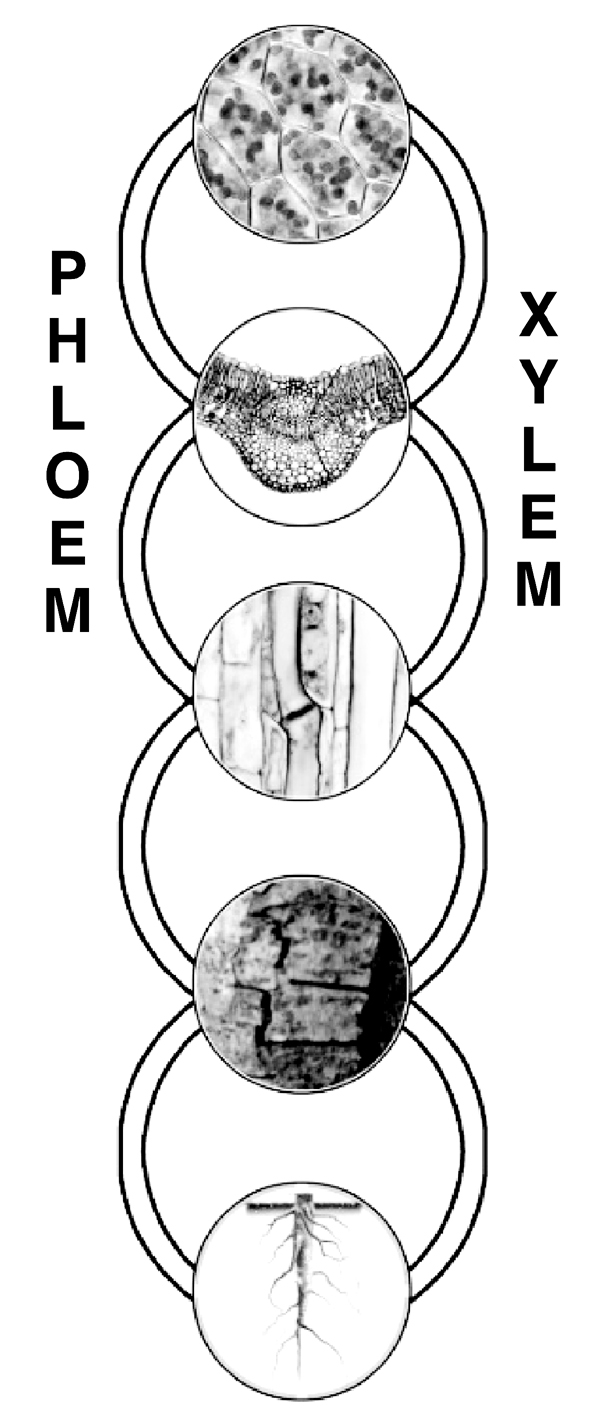
Sahasrāra
Photosynthetic apparatus
Ājna
Leaves
Viśuddha
Stem tubules
Maṇipura
Stem
Mūlādhāra
Root
Ājña — leaves
Viśuddha — stem tubules
Maṇipura — stem
Mūlādhāra — root
Sūrya nāḍī — phloem
Caṇdī — xylem.
All colours in living creatures are the result of organic substances called pigments. These pigments are photosensitive proteins which are electromagnetically sensitive to cosmic light of various frequencies according to their colour. They absorb cosmic light suitable to their colour and reflect back the other frequencies with which they are not in tune. The photosynthetic apparatus of plants, chiefly present in leaves as chlorophyll but also in the form of various other pigments in the rest of the body, serves as an antenna in harnessing the cosmic energy of sun, stars and moon and other planets and thus initiates various biological processes of life (5). Science has demonstrated how the electrons, present in the chlorophyll, present in the thylakoid membranes of chloroplasts of the leaf cells, are ignited by the photons of sun‘s rays and travel via the electrical gradient established between chemicals like NAD, NADP and NADPH and thus help in oxidising or reducing a few more chemicals like RuBP (Ribulose biphosphate) and finally establishing an intrinsic electrochemical gradient of ATP, ADP and AMP. Thus we see a larger cycle of electro-magnetic energies sustaining the plant physiology and a smaller cycle of electro-chemical energies intertwined with this larger cycle. As the larger cycles of Nature are always conterminous with the smaller cycles of electro-chemicals in the plants, there is no necessity of identifying a separate suṣumṇā nāḍī in plants. To be clearer, one can say that plants are always in tune with their suṣumṇā nāḍī, the continuum between the larger cosmic cycles and the smaller individual cycles.
This light energy ignites three kinds of reactions in the plant:
• the light reaction involving the production of ATP and NADPH (the energy currency of all living cells) (6).
• the dark reaction of converting carbondioxide to glucose,thus completing the process of carbon fixation (7). After this fixation in the form of glucose or fructose, (hydrogenoid species) there are still complex reactions like the synthesis of alkaloids (carbonitrogenoid species) and terpenoids and flavonoids (the oxygenoid species).
• and transpiration (8), the process which mediates the light and dark reactions by cooling the internal environment of the plant by losing heat in the form of water and creates a levitative influence on the mineral molecules that are present in the root.
Thus cosmic light enters into the plant through the photosynthetic apparatus, traverses down the phloem vessels (the sūrya nāḍī) creating a high voltage energy gradient of ATP and NADPH. This presence of high voltage ignites several biochemical reactions in the plant through which atmospheric carbon dioxide and inorganic solutes absorbed by the root are utilised in preparing carbohydrates, alkaloids and terpenoids. In this process, the biochemical reactions are chiefly influenced by the water content present in the xylem vessels (the candra nāḍī) which works as a coolant and catalyst.
We have so far discussed three major cakras, sahasrāra, ājñā and viśuddha, acting in conjunction as the energy flows through sūrya nāḍī and candra nāḍī. The stem or maṇipura is that tissue of the plant which is similar to the muscle of the animal. It gives shape to the plant and protects its sensitive and vulnerable biosynthetic apparatus. Sometimes it stores some of its byproducts like latex or resins. Not only that, the stem also influences the process of carbon fixation and subsequent biochemical synthesis of complex molecules by the pressure or vacuum created by the stem ( the outer ring of lignin) on the inner cortex (stem tubules). Its chief ingredient is lignin, the solid element which gives strength to wood to last for centuries together. The root represents mūlādhāra, the lower extreme of the plant‘s life. Still, its function is to establish a continuum of life activity with smaller animalcules whose life is limited to the subterrestrial zone (udbhija, i.e., those life-forms which sprout from the mud eg. bacteria, earth worms, etc.).
This root grows deep into soil in search of right minerals necessary for the plant, dissolves them into itself through siderophores (9) and builds a healthy sub-terrestrial life of bacteria and compost which help plant growth. The mineral- enriched soil is thus the chief requirement for plant growth. It is this differentiation of surface soil from the deep soil which is important while planning for agriculture. Thus the root is the seat for apāna, the limitant between living and non-living matter.
One can see all the 5 vāyus of prāṇa (the energiser) in the form of photo-synthetic light, samāna (the equaliser) which absorbs and imbibes the prāṇa into various hydrogenoid, carbonitrogenoid and oxygenoid plant products, vyāna (the diffuser) which helps in transpiration of water and spreads the reactions across distant tissues of plant and initiates osmotic transport of all food materials, udana (the elevator) which sucks up various minerals from the solutes in the root and the stem to utilise them in the synthesis of higher molecules and apāna (the limitatant – apāna when broken into its root words means un-drunk i.e., un-drunk by the life-energy, the variṣṭha prāṇa) which sets boundaries between the living and non-living matter.
This is the metaphysics behind the science of Photobionics, which is questionable from all sides but is no longer a question to myself. It is along the kuṇḍaliī described above that I isolated certain chemical elements which have a catalytical capacity, a capacity to shift the voltage thresholds and thereby influence the plant growth.
Method of application of photobionic potencies and rationale behind
By spraying photobionic potencies on these plants, the stomata on the leaves get stimulated and spread appropriate signals all across the plant to initiate the biochemical reactions appropriate to that chemical. There is a tissue specificity in the plants for these chemicals and so by sensing which tissue needs additional nutrition in a plant with poor growth, the appropriate chemical has to be selected and sprayed.
There is a general similarity between these tissues in all the plants although there is a specialisation of one of these tissues as they evolved through unnumbered millennia in each plant thus influencing its characteristic diversity in the plant kingdom. Thus the basic list of the chemicals is the same for all plants and special medicines are only required in specialised conditions and in variation according to species. Even then, some standard treatment plan may be designed in each crop thus making it convenient to the layman to implement organic farming through Photobionics.
As a beginning, I started working on paddy plants as their structure is simple and also because it is the most widely cultivated.
As I tried to find a sequence of medicines that have to be sprayed according to various phases of growth of the plant, it was found that these are the very chemicals that are being used in the name of artificial fertilisers and pesticides. I saw a possibility of using these chemicals in micro-dilutions as a foliar spray. I soaked the seeds in a series of potentised medicines with a gap of one hour in between to allow the enzymes produced to increase in concentration in the meantime. Usually we start the process of soaking seeds in the morning around 6-7 am so that the soaking in successive medicines falls into tune with the appropriate time in which a biochemical reaction is initiated in the seed based on the photosynthesis.
This is the order I followed:
1. Urea 32c for 12 hrs to break the outer coat (cuticle ) – to promote the root system.
2. Kali carb 32c for 4hrs to promote stem formation (promoting the absorption of water into the primordial cell thereby the formation of different solutes of minerals).
3. Alumina 32c for 2-3 hrs to stabilise minerals absorbed in the form of ligands.
4. Magnesium sulph 32c for 2 hrs to activate all other enzyme processes (companion cell formation which keeps the contact between the photosynthetic electron chain and organic solute production in phloem).
5. Cuprum sulph 32c, Zinc sulph 32c, and Sulphur 32c independently potentised in distilled water and mixed together, for 1-2 hrs to activate all mineral-based enzymes related to photosynthesis (to bring into contact the enzymes of photosynthesis with the minerals absorbed into the xylem vessels).
Once this priming of seeds is done, the seeds may be sprinkled in the fields.
As the plant grows, the micro-nutrients necessary for plant growth may be given in potentised form by spray to promote healthy growth and to prevent pests from flourishing because of unnatural proteins growing inside the plants. A routine method of spraying Urea 32c, Kali carb 32c once in 1-2 weeks is done in the first one month. After transplantation is done, Urea 32c, Kali carb 32c, Ammonia 32c can be sprayed once in 1-2 weeks till the end of the crop. Any additional requirement of medicine depends on the situation therein. The following medicines are identified till now to be effective:
Ammonium causticum 32c, Phosphorus 32c, Methyl salicylate 32c.
At the end of the crop, if the panicle eruption is delayed for various reasons, Urea 32c or Methyl salicylate 32c have helped in the easy growth of the panicle and seeds.
First trial
I first conducted a trial taking 3 plastic trays filled with seeds. In the first tray, photobionic medicines were used. In the second tray artificial manures were used. In the third, no medicine whatsoever was used. The sprouts in the third tray soon perished. A parallel growth was observed between the other two trays. Encouraged by this, we started experiments on the soil.
(To be continued…)
Bibliography
1. http://en.wikipedia.org/wiki/Plant_nutrition [Accessed 27th July 2013].
2. http://en.wikipedia.org/wiki/Photosynthesis [Accessed 27th July 2013].
3. http://en.wikipedia.org/wiki/Hydroponics [Accessed 27th July 2013].
4. Hahnemann, S. Organon of Medicine. 6th ed. Aphorisms 48,49,50. New Delhi: B. Jain Publishers; 2004, pp. 133, 134.
5. http://en.wikipedia.org/wiki/Photosynthesis [Accessed 27th July 2013].
6. http://en.wikipedia.org/wiki/Light-dependent _reactions [Accessed 27th July 2013].
7. http://en.wikipedia.org/wiki/Dark_reaction. [A Accessed 27th July 2013].
8. http://en.wikipedia.org/wiki/Transpiration [Accessed 27th July 2013].
9. http://en.wikipedia.org/wiki/Siderophores [Accessed 27th July 2013].
Dr. Venkatesh Palla, a member of SAIIIHR, is a practising homoeopathic physician at Bhimavaram, Andhra Pradesh, India.
Share with us (Comments, contributions, opinions)
When reproducing this feature, please credit NAMAH, and give the byline. Please send us cuttings.
